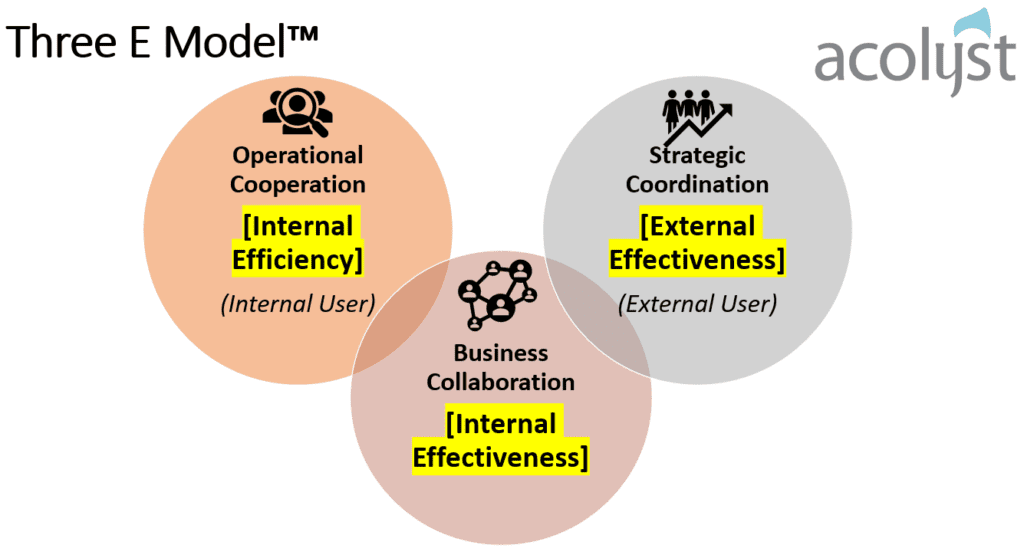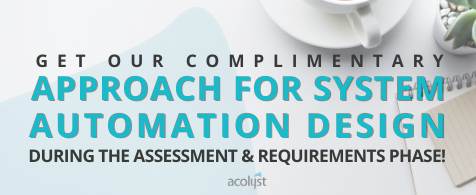The Four “-ize” to Bringing Two Distinct Cultures Together and Proactively Boosting Transformation Adoption: Collaborative Communication Roadmap for Growth Mindset in a Digitally Decentralized Organization
By Valeh Nazemoff [Post originally featured on Thrive Global]
An entrepreneur in the government contracting space recently acquired two uniquely distinct companies. One company has strengths in IT Modernization involving cybersecurity and analytics, while the other company focuses on strategic programs involving compliance, technical, and management services.
This CEO’s entrepreneurial goal is very specific; to focus on transformation adoption for organic growth applying evolutionary and innovative solutions. This requires a cultural mindset shift. Why? When working towards collaboration of solutions, issues and problems can arise due to different expectations, assumptions, perception, perspective and experience. Further, when requiring one company’s mindset to think above and beyond for how their solutions can compliment capabilities and help expand customer footprint for the other company, there is a required blending of interaction, conversations, engagements, and discussions. This is no different than trying to expand your mind’s reach and engagement activities as a government contractor proactively responding to the end government client’s expectations.

This CEO brought me on board to establish collaborative engagement with his decentralized team, build a joint executable strategic plan, and implement growth models for different solution focus areas.
Further, the CEO is planning on two more acquisitions within the next 6-9 months that will need to merge with the transformation adoption program set in place.
So how do you create an environment that sparks mindset momentum for evolution and innovation, collaborates to solve problems, streamlines governance, and drive workforce productivity and performance? From experience, there are four stages that establish the foundation for a transformational culture change initiative.
1. Centralize – launch a cultural transformation office with a masterminding practice.

I often hear of management hosting cadence meetings focused on evolutionary and innovative discussions. The outcome I’ve seen with this approach is the limited creative thought process the workforce puts into it. Innovative-mind doesn’t turn on at a set time, same day of the week. As soon as the workforce members receive a meeting reminder notice they unproductively try to force themselves into a breakthrough idea. Instead of mindful bursts of collaborative ideas that lead the team forward, it can create stress.
Creative thoughts and ideas need to flow, continuously, without the pressure of trying to come up with something. A cultural transformation office needs to have a specific intention where all members are aware of the purpose the program office is attempting to achieve. The goal is to establish a culture of practicing creative breakthrough thinking that is actionable.
In my bestselling book, The Four Intelligences of the Business Mind, I share how masterminding is a practice that welcomes curious engagement set in a non-judgmental zone. This can be done with centralized and decentralized teams. It is an accepted zone where the inclusion of voicing ideas, both good and bad, creates healthy dynamic discussions that leads to action. Feeling of inclusion is key to centralizing information. Keep a dialogue of openness, where people feel comfortable sharing and genuinely participating regardless if it is an issue or need for a creative breakthrough. The goal at this stage is for the cognitive behavior of innovative and collaborative mind sharing to become a habit by creating a common language and theme for the desired impact.
2. Organize – collect and categorize decisions into the Three E Model™.
Once the intention of masterminding has been established, accepted, and practiced, the shared ideas and thoughts can be collected using an idea log. Discussions and decisions of approach can be made by categorizing centrally in an organized fashion. For this project, I’ve been using Acolyst’s Masterminding tool, which is a collection of thoughts, evaluation, decisions, and lessons learned that can run across various categories and subcategories depending on the structure and focus of the organization: project management, technology, customer relations, opportunity assessment, campaign marketing, research and development, resource management, operations, finance, compliance, etc.
The goal is to categorize and organize each go-forward-decision using the Three E Model™, which I discuss and share practice exercises for in my latest book, Supercharge Workforce Communication.

Here is the breakdown of the Three E Model™:
• Internal Efficiency – providing increased efficiency cooperation over time with cost and operational activities.
• Internal Effectiveness – providing workforce collaboration to increase productivity and address gaps.
• External Effectiveness – providing innovative coordinated solutions that effectively improve end user experience.

For example, the US Government’s IT Modernization initiatives focus on cybersecurity, mobility and cloud. That also involves 5G telecommunications. AT&T has built out nationwide network and towers for the First Responder Network Authority (FirstNet) that makes the desire for faster speed more practical for switching from 4G to 5G.
In this scenario, organizing go-forward-decision for 5G activities into the Three E Model™ could include:
• Internal Efficiency – mindset focus on cost and operational savings the switch from 4G to 5G will require.
• Internal Effectiveness – mindset focus on addressing policy changes, governance, streamlining processes, and enhancing equipment to accommodate 5G.
• External Effectiveness – mindset focus on innovative cybersecurity solutions to address predicted online gaming and movie application user increase due to lower latency and increase speed 5G brings.
3. Prioritize – map data driven evolutionary and innovative solutions back to strategic requirements impacting organizational change.
Effective communication helps avoid project scope creep. Prioritization of go-forward-decisions help staying on target with requirements, managing resources, and budget. What is prioritized and how it impacts organizational culture is key. There are tons of “nice-to-haves” but what are “must-haves” and how does it align to the business’s strategic initiatives?
When prioritizing, there are other elements to consider. An example is avoiding team burnout. Sometimes leaders get excited to conduct multiple actions involving evolutionary and innovative solutions, but it is vitally important to be conscious in considering the health of the team.
To do this, evaluate the weight of prioritization against requirements and impacts by taking the list of activities from the Three E Model™ and applying data driven measures and metrics to assess the organizational impact.

For example, in our 5G example above, apply Service Level Agreement (SLA) metrics and Key Performance Indicators (KPIs) to prioritize risks, safety, compliance reporting, customer satisfaction, experience, and engagement, quality, finance, resource, and more. Then treat the various targets as a communication visual storyboard to a specific audience. This activity, when focused on each of the Three Es, will help determine organizational cultural impact against priority of activities.
4. Synchronize – standardize collaborative communication transparency for traceability and change management.

When promoting a proactive approach to creative collaboration, it is important to transparently communicate distributed notices and documents. More importantly, when dealing with the workforce of the future, standardizing for traceability and change management will help build a synchronized culture.
For example, when working with teams on a proposal delivery, to keep everyone synchronized, establish a standardized review practice for transparency. This in turn creates an effective platform for traceability and change management. The same applies for marketing campaigns and other business objectives.
Within the Acolyst Change Workload Tracking tool, there is a communication component that addresses who to keep in the loop and when through the RACI method described in my book, The Four Intelligences of the Business Mind. RACI is a synchronized responsibility matrix that stands for Responsible, Accountable, Consulted, and Informed. For instance, at different proposal stages, there will be various people with different degrees of responsibility.
The key is making sure synchronized conversations are happening so there are no surprises. Yet, know when to balance collaborative creation versus giving space to create. This builds a trusted and empathetic work environment, regardless if the organization is decentralized or not.
Conclusion:
Focusing on the four “-ize” – centralize, organize, prioritize, and synchronize – has helped maintain the energetic momentum and attitude of the decentralized team for my current cultural transformation project. However, it is the leadership team that ultimate drive the success of the cultural change. Without the executive buy-in, focusing on empowering the workforce to achieve the strategic goal, objectives, and initiatives will be minimal. Cultural change does not just occur based on merger of acquisitions. Work must be put into it to make it successful. Other changes can happen too – new regulatory initiatives (ex: data privacy), new technology, and new contract win. What is key is the leadership’s behavior in communication styles, engagement, handling feedback, disputes, problem solving, setbacks, and wins, all affect the culture. Existing leaders are busy with other day to day activities; thus, why it is critical to establish a leader driven cultural transformation office or program to champion on-going business changes. What I share are based on actual engaged experiences.

Now I want to hear from you. What workplace cultural change matters to you most today? What transformational actions has your organization taken to drive collaborative communication forward?


